Developing the Theme
Over the course of studying the module I have become increasingly attracted to telling a story, in the sense of creating a myth or falsehood; essentially a still version of a film. At the same time, I have become increasingly interested in the tableau vivante as a form. In addition to tableau photographers Gregory Crewdson and Jeff Wall, who were introduced to is in the course unit, further examples include Andreas Gursky, Ryan Schude and Sylvia Grace Forda.
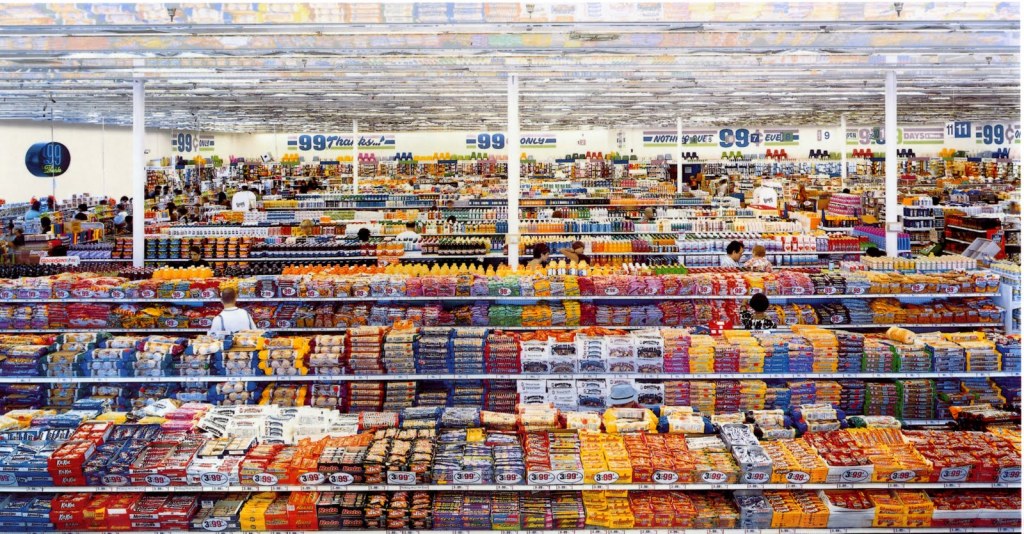
Andreas Gursky, 99 cent, 1999 
Ryan Schude, The Diner, 2008 
Sylvia Grace Borda, Mise en Scene, Farm Tableaux Finland, 2015
Although Gursky’s work is technically brilliant and he obtains record breaking prices for it, it is the work of Schude that I admire more. He draws on his commercial background to add huge complexity, colour and depth to his tableaux, in the same way, for example, that Ridley Scott did with film. While Borda’s work may seem a little drab in comparison, her series carry a greater narrative and is documentary rather than fictional.
The mimicking of known artwork to create an allegory or alternatively to borrow the style of a known artwork is also interesting; the work of Tom Hunter was introduced to us in the course unit.
I have chosen to use the idea of a tableau, using Schude as a model, including if possible, his technique of telling simple stories with an absurd twist, and borrowing heavily on an existing piece of art. The art I have chosen is da Vinci’s The Last Supper. I have chosen this piece in part because I admire da Vinci’s draughtsmanship and technical mind, but also because of the narrative depth of and the symbolism in the painting.

Leonardo da Vinci, The Last Supper, 1495
I am not the first to use da Vinci’s Last Supper; Adi Nes’s Untitled, Last Supper is a good example. Nes’s image is documentary rather than absurd or comic and tells the story of Israeli soldiers enjoying each other’s company before heading out into battle. The painting has been generally criticised or lauded for the homoerotic undercurrents as well, though this is an aspect that I have not drawn on particularly.

Adi Nes, Untitled (Last Supper), 1996
It was not the intention to copy the (da Vinci) scene exactly, but to use the form to convey a narrative that can be loosely connected to that of the original but one that tells a new story. My intention was to take two scenes and at the outset leave it as an open decision to either select one (the ‘best’), or create a diptych of sorts.
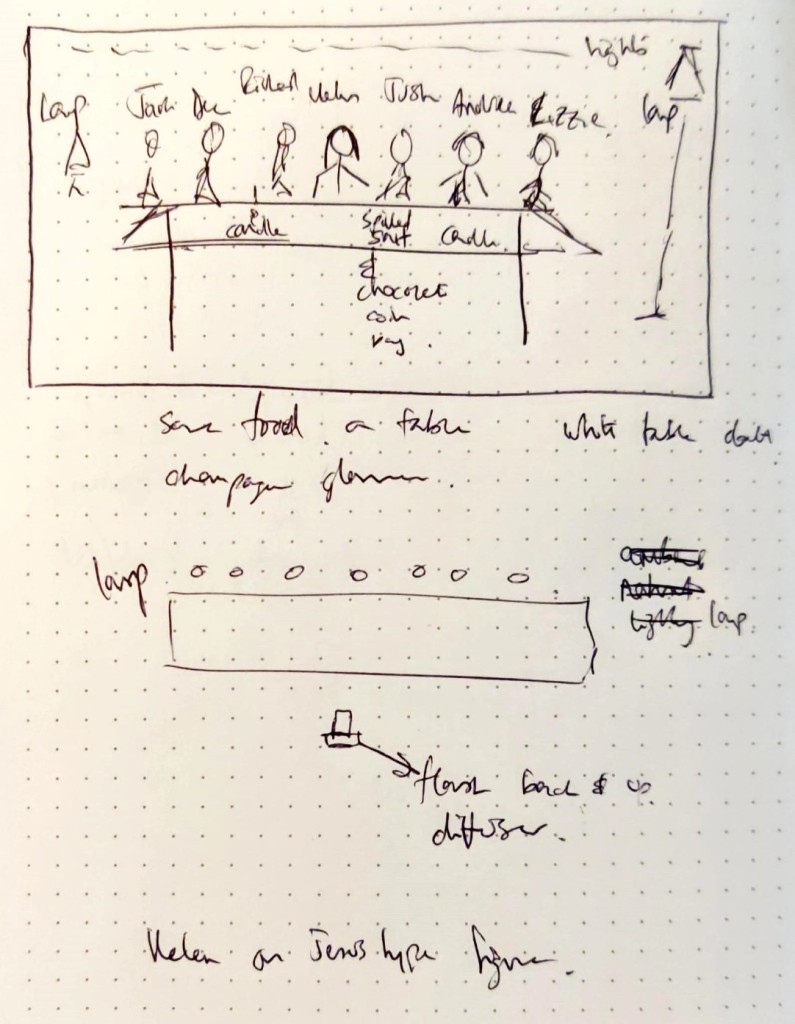
Set Description 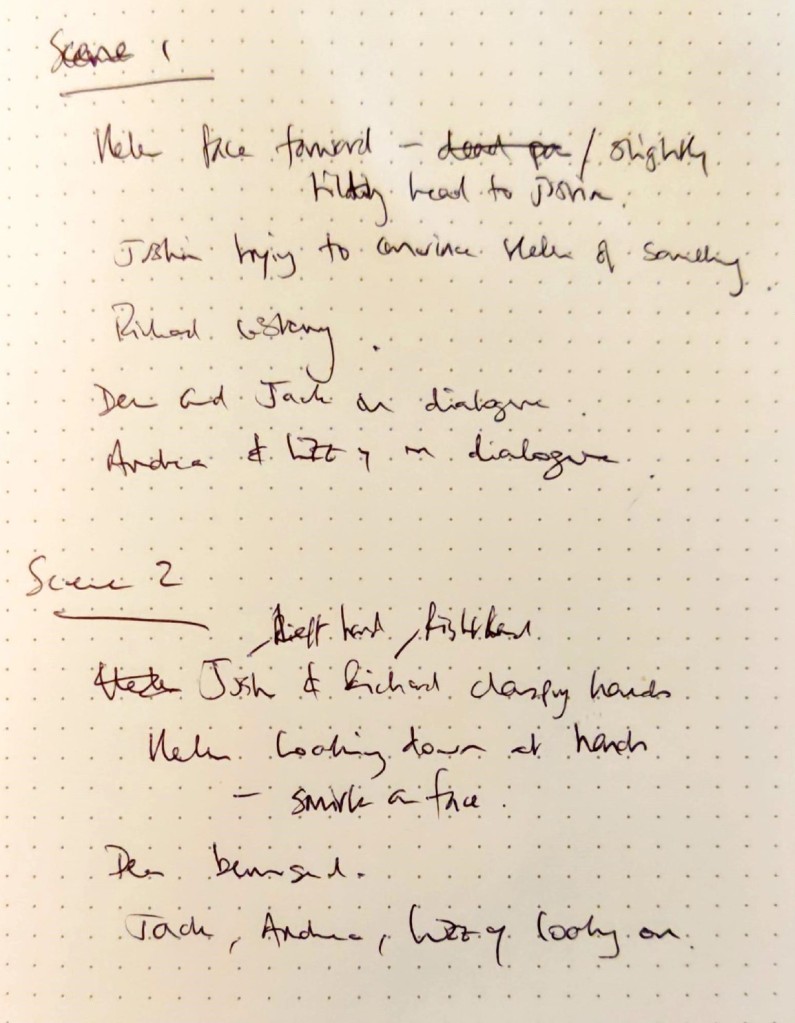
Scene Description
I thought about how I could create a similar scene, for example, hiring a studio and using professional models. A full approach like this would have been outside of my budget for an assignment so instead I decided to ask friends to model and to use our dining room as the set. The selection of friends might even allow me to provide some interesting narrative.

The Space
Technical Approach
All photographs were taken with a Fujifilm XT3 on a tripod. Test shots were taken at a number of settings, starting without flash to create a baseline setting for aperture and shutter speed:

Setting the baseline exposure without flash 
The baseline exposure without flash
The baseline exposure chosen was f3.6, a shutter speed of 1/250s and an initial ISO setting of 1600, which obtained a broadly correct exposure for the lamps and string lighting.
A Godox V1F flashgun was mounted on the camera. I purchased this flashgun for this and future assignments; with a higher budget I would have purchased two or more flashguns, two stands and light modifiers (umbrellas, softboxes etc) to have better control of the lighting.
I selected a head angle of 45◦ and used the dome diffuser and tested the lighting at a number of settings. A card modifier was used in one test shot.
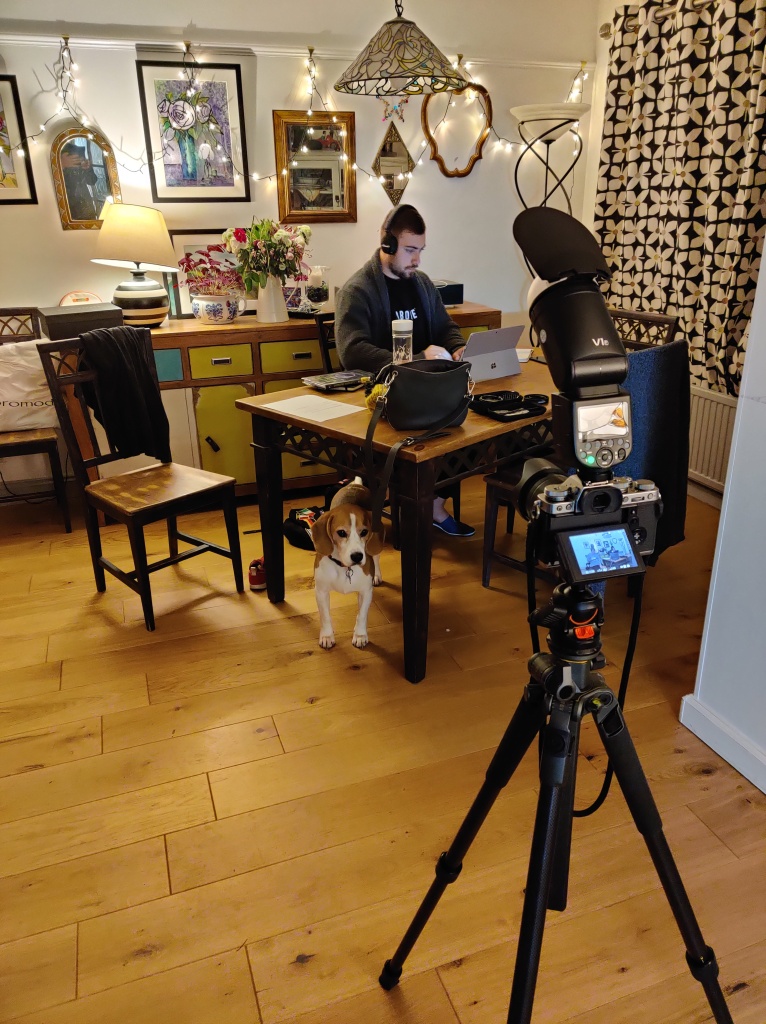
Obtaining the correct flash settings

ISO 3200, flash power 1/256 
ISO 3200, flash power 1/128 
ISO 3200, flash power 1/64 
ISO 800, flash power 1/64 
ISO 800, flash power 1/16 
ISO 1600, flash power 1/32 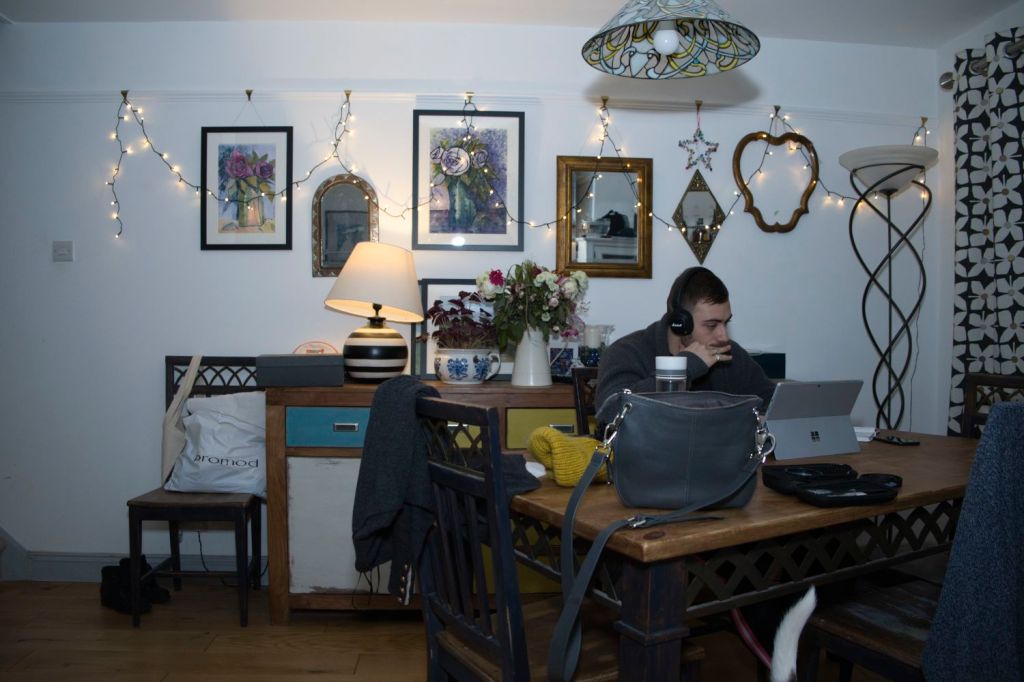
ISO 1600, flash power 1/64 
ISO 1600, flash power 1/64 + card
I was able to obtain the right level of fill-in flash (@ ISO 800 with a flash power of 1/16 and without card) without harsh shadows with a setup close to the original intention (see set description graphic above). The remaining task of adjusting to get an overall exposure still remained.
Once I had created a lighting solution, I created the scene, adjusting the decorations, de-cluttering, adding candles, glasses, wine etc. and ensuring seat placements would work. I re-tested the lighting solution with the scene set-up.
My interpretation centres first on my choice to use our town Mayor of the central actor – the Jesus equivalent. She represents authority being the Mayor and wears the chain as a symbol of authority. Using a female actor is an interesting, if not original, take on the usual choice, and fortuitously has a hair style reminiscent of the original.
The use of 9 actors (all I could realistically use) results in different dynamics, so I have opted to have actors conversing in pairs rather than the triplets of the original.
The first image was intended to portray a similar story, combining the last formal meal of the year and a gathering of friends. Two of the actors are homosexual, drawing similarities to the Adi Ness Last Supper and therefore I had a choice of the second image. Either have a relaxed intercourse between the actors or draw out the fact that two were gay. In the end I chose the former as it conveyed the friendship of all involved more convincingly.
The contact strip of images is as follows:

Contact Strip

Alternative Second Picture

Last Supper
Reflection
Demonstration of Technical and Visual Skills
(Materials, techniques, observational skills, visual awareness, design and compositional skills)
I believe that I demonstrated a degree of competency with respect to the use of lighting (within a limited budget), available props and composition within a tightly defined space. The number of symbols could have been greater, if required to reflect a more complex narrative.
Quality of Outcome
(Content, application of knowledge, presentation of work in a coherent manner, with discernment)
I would like to have created a more complex narrative, but in doing so I would have had to abandon this idea and probably would have had to use professional actors. In the end the images lacked the visual impact I was aiming for. Nevertheless, I feel that I have achieved a degree of success in achieving some directorial control.
However, the actors were not professionals but family and friends, who participated with varying degrees of skill and enthusiasm. The quality of outcome was clearly limited by this.
Demonstration of Creativity
(Imagination, experimentation, invention, personal voice)
I hope that I have demonstrated some degree of imagination and not just replayed the usual tropes. It may not be fully evident from the contact strip that there was some experimentation and in any case the amount of experimentation possible was limited by the bounds of the original idea.
I have not found my personal voice yet, but this work has pushed my acting/direction from the self-portraits in the previous assignments to the direction of a wider group.
Context
(Reflection & Research)
I was drawn to Ryan Schude, shown above, and Gregory Crewdson, shown below, as inspiration to create a scene and direct a group of actors in the scene to tell a narrative. As mentioned above, I want to draw in a little of the absurd or at least humour into the narrative. I have managed to do this in the second image and to some extent in the first image (the expression of the central figure).

Gregory Crewdson, Six Feet Under, 2001 – 2005 
Jeff Wall, A Ventriloquist at a Birthday Party in October 1947, 1990
The Adi Ness Last Supper, while documentary in nature provided an example of the use of an already famous piece of art (in this case da Vinci’s Last Supper) in the same way that Tom Hunter did with Dutch Masters.
My diptych follows in this tradition, instead telling a basic tale of friendship in a small town.
Reflection after Tutor Feedback
The final diptych was printed on A4 but following advice from my tutor I printed it on A3. Reviewing both side by side I decided to submit the A3 version, which provided more impact from the scene overall and individual expressions and hand gestures.
